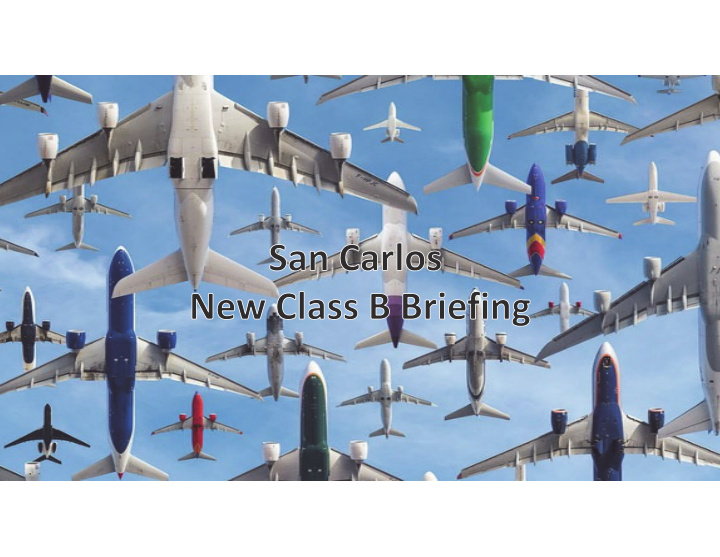



Reasons the Class Bravo Airspace was Changed • Updated Aircraft Technology • Today’s Fleet Utilizes a More Efficient Wing Design • Optimal Descent Angle of 2.72°to 2.85°in a Clean Configuration • Modern FMS Can Manage Both Lateral and Vertical Path • Today’s FMS Capable Of Managing a Descent From Cruise Altitudes To the Runway at Near-idle Thrust • Low-thrust Descent in a Clean Configuration Results in a Smaller Noise Footprint • Descent in a Clean Configuration also Results in a Lower Fuel Burn and Associated Carbon Emissions
Blue is new, red is old boundary
VFR Flyways • VFR Flyways are depicted on the reverse side of the VFR Terminal Area Charts (TAC), commonly referred to as Class B airspace charts. • For use by pilots in planning flights into, out of, through or near complex terminal airspace to avoid Class B airspace. An ATC clearance is NOT required to fly these routes. • It is very important to remember that these suggested routes are not sterile of other traffic. The entire Class B airspace, and the airspace underneath it, may be heavily congested with many different types of aircraft. Pilot adherence to VFR rules must be exercised at all times. • The SFO Class Bravo VFR Flyway Chart will depict a unique named VFR Flyway
NE NW Bay Flyway-over OAK ATC Assigned Altitude (Expect to cross OAK at OAK 2,000) Example Phraseology: BAY FLYWAY “Proceed via NE to SW Bay Flyway. Remain clear of Class Bravo.” SW SE
Class B Transition Routes • Transition Route is a defined route depicted on a TAC for transiting through the Class B airspace, and includes specific altitudes. • Pilots must remain clear of Class B airspace until ATC authorization is received. On initial contact, pilots should advise ATC of - their position - altitude - name of route desired - direction of flight After a clearance is received, pilots must fly the route as depicted and, most importantly, adhere to ATC instructions.
Bayshore Transition 1,500’ to 3,500’
Pacifica Transition 1,500’ to 3,500’
Coastline Transition At or above 3,500’
SQL SQL
Surface to 1,499’ (blue is new, red is old boundary)
1,500’ to 1,599’ (blue is new, red is old boundary)
• Some changes that you may hear from the Tower: • Higher transition altitudes such as 1500, 2000, etc. and remain outside of Class B • Higher crossing altitudes may be assigned for inbound traffic ie “cross the airport at or above 1400, enter right/left downwind…” Make note that the Class B has been LOWERED just south of SQL to 3000. Be aware if using the Bay Meadows departure. Use caution that there is no built in buffer from wake turbulence from aircraft on the SFO final if you choose to take advantage of these higher Class B altitudes across the bay.
Recommend
More recommend